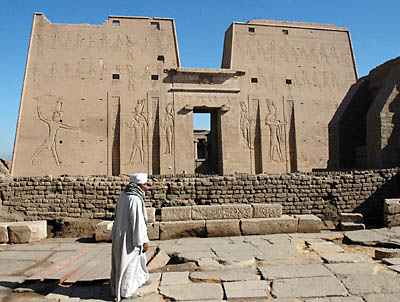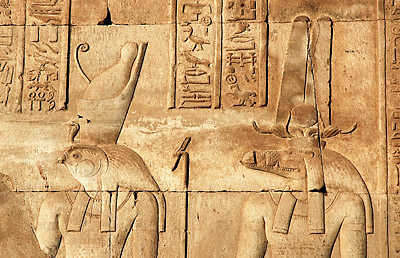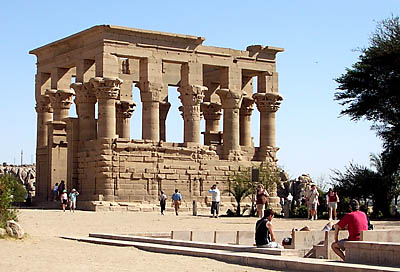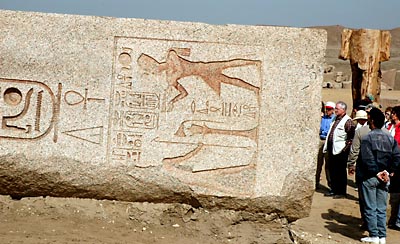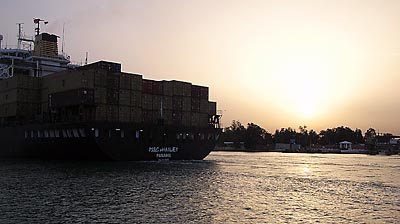|
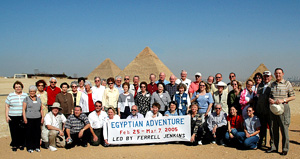
Click
on GROUP above for a larger photo
of our tour group at the Pyramids of Giza.
New
photos added March 15.
|
|
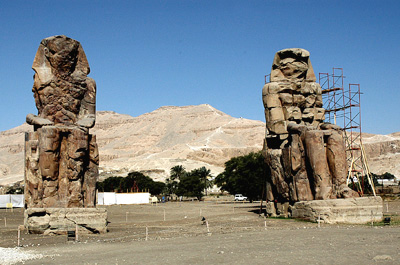
|
The Colossi of
Memnon in the Valley of the Kings at Thebes. These great statues which
stand more than 50 feet high once served as the entrance to the mortuary
temple of Amenhotep III. Note the white fence behind the left statue.
New excavations are taking place there. Greek and Roman tourists gave
these monuments the name "Memnon."
|
| The
entrance to Karnak Temple at Luxor with the hordes of tourists interfering
with good photography. How dare they! So many, in fact, that one could hardly
move. |
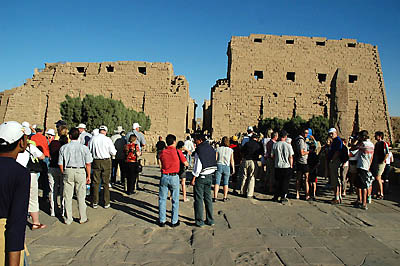
|
|
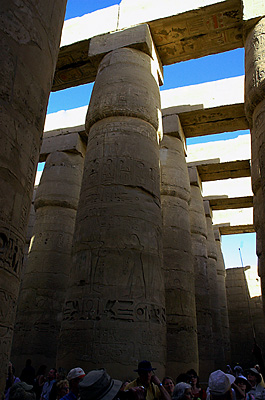
|
Columns
in the massive hypostyle hall in the temple of Karnak. This hall
covers 6,400 square yards. The roof was supported by 134 papyriform columns
of limestone. |
|
Ruins
of the Luxor temple can be seen from the Nile River. Luxor was
known as Thebes in the Old Testament. Both Jeremiah and Ezekiel prophesied
the Lord's judgment of the city (Jer. 46:25; Ezek. 30:14-16). Alexander
the great came to Thebes in 336 B.C.
|
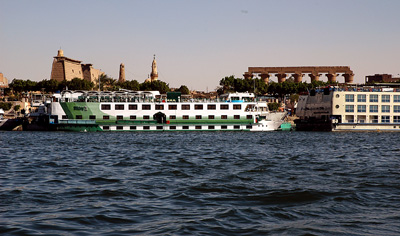
|
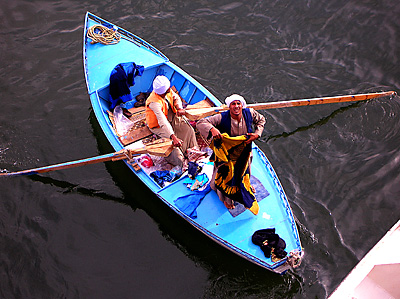
|
Me
make you cheap price! The enterprising salesmen row out to meet the
cruise ships at Esna. |
| Nile
Pioneer II. Our Five Star Deluxe home on the Nile River for four nights.
This is one of the hundreds of boats that transport tourists from Luxor
to Aswan (or the reverse trip). |
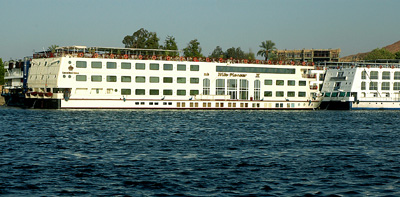
|
|
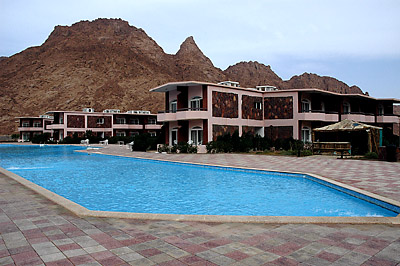
|
In
the Sinai. Elizabeth and I took a two day trip into the Sinai peninsula
after the tour. We spent a short night at the New Morganland Hotel near
St. Katherine's monastery. Beautiful setting. |
|
View
of Saint Katherine's (on left slope) and the Rest, traditional
place of the camping of the Israelites at Mount Sinai. This photo was
made earlier on the morning of March 8, 2005.
|
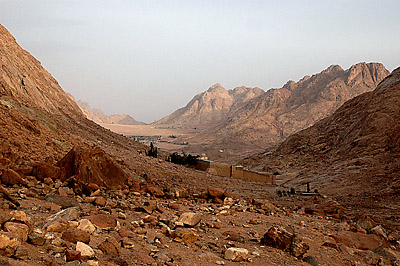
|
|
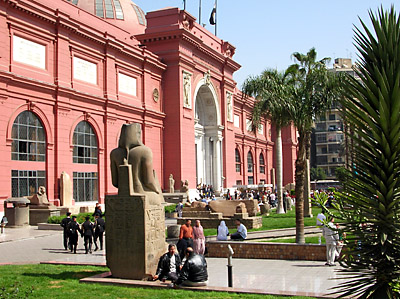
|
The
Egyptian Museum is filled with artifacts from all periods of Egyptian
history. Unfortunately, the Museum no longer allows photos of the artifacts.
This is a bad policy. The great museums, such as the British Museum, the
Louvre, and the Pergamum Museum in Berlin do allow photos.
|
| The
Nile River serves as a corridor of trade for Egypt. This boat is carrying
cut stones to be used in building projects. |
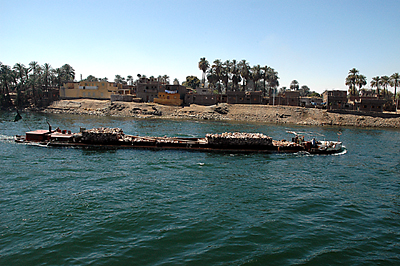 |
|
|
Edfu Temple.
This is the temple of the sun god Horus who is represented by a falcon.
The temple was begun by Ptolemy III in 237 B.C. and completed by 57 B.C.
Ptolemy is portrayed repeatedly on the temple walls.
|
|
Sailing
on the Nile in a felucca is an wonderful experience. The scenery
is outstanding as we sail around Elephantine Island at Aswan.
|
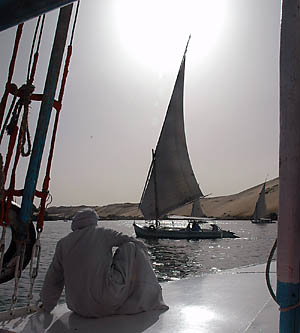 |
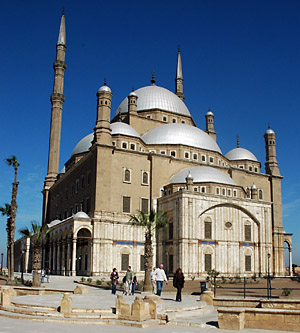 |
Mohammed
Ali Alabaster Mosque in Cairo. No, not the boxer. He took his name from
the man for whom this mosque is named. Mohammed Ali was an Albanian who
played a prominent role in the history of Egypt during the 19th century.
He brought numerous reforts to Egypt and his influence continued until the
middle of the 20th century. |
|
The
Unfinished Obelisk in the granite quarry at Aswan. People look
small by comparison. This obelisk would have been 137 feet long. It weighs
1152 tons.
|
 |
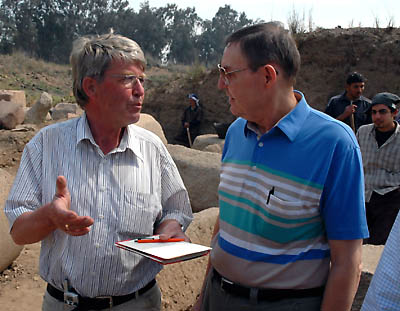 |
Christian Tietze of
the University of Potsdam explains some of his work at Tell Basta
to Ferrell. This site is in the Land of Goshen and is identified
with the Pi-beseth (or Pibeseth) of Ezekiel 30:17.
|











